Art Fairs
Art Dubai Mixes Big Money, Strong Sales and Edgy Art As Conflict Engulfs Arab World
Great business is to be done if you are willing to play by the rules.
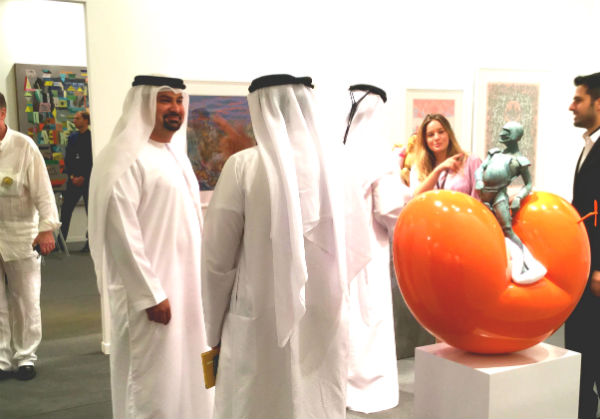
Great business is to be done if you are willing to play by the rules.

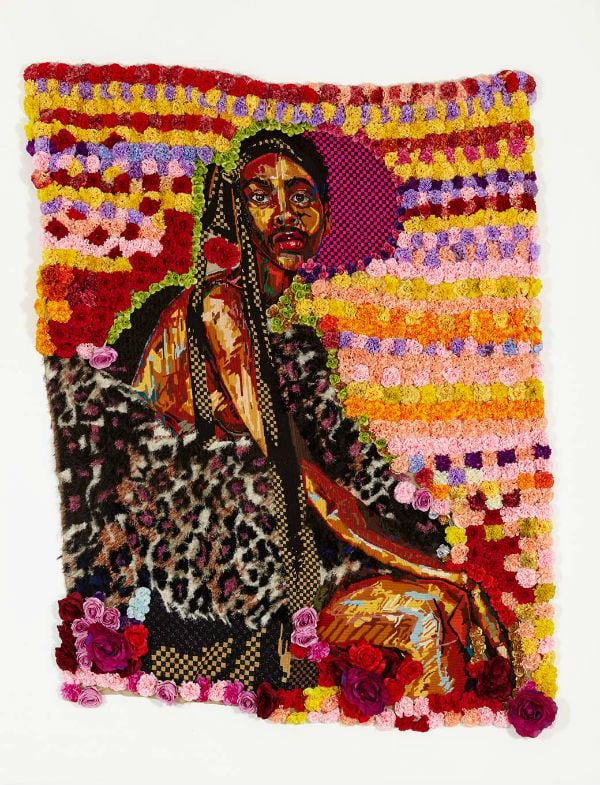
Athi-Patra Ruga …Manhostage. Uddermaker. (2014)
Photo: courtesy of the artist and WHATIFTHEWORLD, Cape Town
Art Dubai is a heady mix: big money meets cutting-edge contemporary art and Eastern modernism in the golden bubble of Madinat Jumeirah resort, the fair’s host since its inception in 2007. With 92 galleries, thirty of which are from the region, Art Dubai is, according to its director Antonia Carver, “the largest showcase of artists from the Arab world” globally. And although the art market here has been growing at a rapid pace—due in no small part to the fair itself—the UAE, and Dubai in particular, still has the allure of an emerging marketplace, full to the brim with opportunities for local and international galleries ready to make the effort (see the 2014 report Art Dubai Opens With Steady Sales, Mostly Under $100,000).
“It’s fabulous, it was like finding a home again,” Leila Heller told artnet News. The New York dealer is a bit of a UAE veteran: she has been coming to Art Dubai and its Abu Dhabi counterpart since their launch, and praised Art Dubai’s “curious and inquisitive” collector-base. Heller is now cementing her commitment to Dubai with a new gallery, set to open in Alserkal Avenue’s new development in the fall of 2015 (see Alserkal Avenue Previews Expansion in Dubai).
Heller’s strategy is clearly paying off. Her booth—curated by academic Shiva Balaghi and featuring works by Noor Ali Chagani, Hadieh Shafie, and Loris Cecchini (priced in the $10,000-45,000 range)—had almost sold out half way through the preview day (see d3 Design Weekend to Kick Off in Dubai).
Censorship at the Modern Section
But if you want a slice of the Emirati pie, you have to abide by the rules. One of the highlights of this year’s Modern section is a booth showcasing the work of Kāveh Golestān, an Iranian artist and photojournalist killed by a land-mine in 2003, while covering the Iraq War for the BBC.
Curated by the keeper of the estate, Vali Mahlouji, Golestān’s exquisite photomontages picture a surreal world, in which kings sport animal heads, and naked beauties frolic with exotic snakes. But again and again, a silver sticker hid the nudity that might have offended some visitors.
“I strongly disagree, but I understand the rules of the place,” Mahlouji told artnet News, “covering them a little bit allows me to show the archive.”
“It’s a scene that’s gradually opening up, step by step,” director Antonia Carver told artnet News when asked about censorship at the fair. “But at the same time, we are super aware that this is a region with its own traditions, its laws, its own way of working, and we respect that—in part to make sure that we are always gaining the maximum audience.”
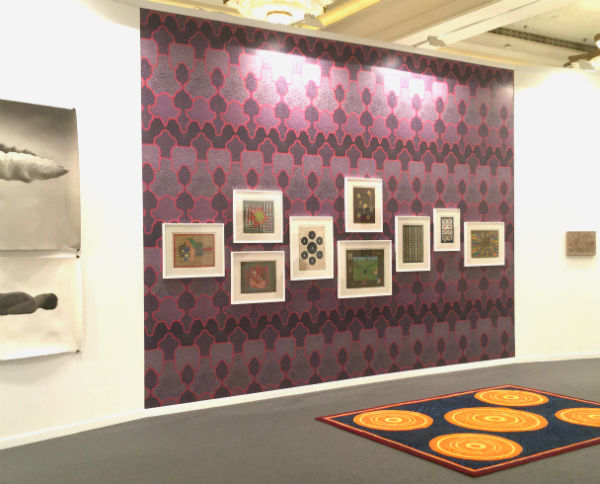
Wallpaper and carpet by Alexander Gorlizki – Jhaveri Contemporary, Mumbai
Photo: Coline Milliard
Africa in the Spotlight
With only 15 galleries, the Modern section is a bijou setting showcasing works from the 1940s to the 1980s. And while some of the art shown can at times feel derivative—think Picasso, Chagall, de Staël après la lettre —there are some true gems to be discovered. Among them are the dye-on-skin works by Moroccan painter Farid Belkahia at Tunis’ Le Violon Bleu. Loosely anthropomorphic shapes painted with natural pigments echo the supports’ soft curves (price tag: $50,000-200,000). Belkahia is well-known among connoisseurs—and collected by the likes of the Guggenheim, Mataf in Doha, and the Institut du Monde Arabe in Paris—but his work remains little shown in the West. This solid solo presentation could be a game changer.
“A lot of museums come around and they do pay attention,” Mydrim Gallery’s Ayo Adeyinka told artnet News. The Lagos gallery has chosen Art Dubai to make its first steps on the international fair circuit. It is presenting stunning wood-carvings and paintings by Bruce Onobrakpeya, priced at between $5,000 for the small works on paper and $120,000 for a monumental representation of the Last Supper (1981).
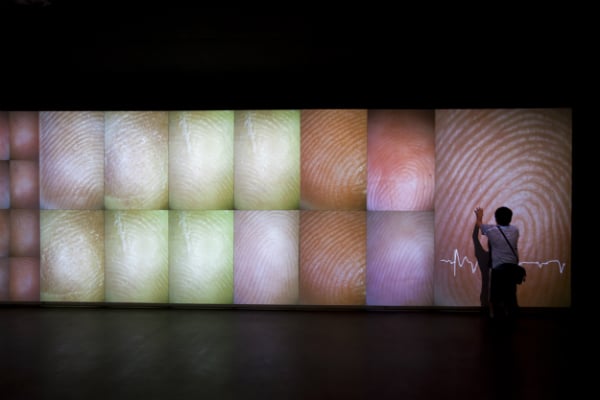
Rafael Lozano-Hemmer Pulse Index (2010)
Photo: courtesy of Carroll/Fletcher
If business at Modern wasn’t exactly brisk in the first few hours, those already at home in the Middle-Eastern and North-African market definitely had an edge. Tunis’ El Marsa Gallery, who present at Art Dubai since the first edition, reported having sold out the booth, which features 1950s works by Hakim Elmekki ($30,000-60,000) and Gouider Triki.
“At the end of the day, at art fairs, you want to make discoveries,” said Rajeeb Samdani. Together with his wife Nadia, Samdani is the force behind the critically-acclaimed Dhaka Art Summit. The Samdanis are fervent contemporary art collectors. But at Art Dubai last year, they were seduced by the work of modern artists Anwar Jalal Shemza and Zahoor Ul Akhlaq, who influenced the works of some of the artists they collect. “That was superb,” he said.
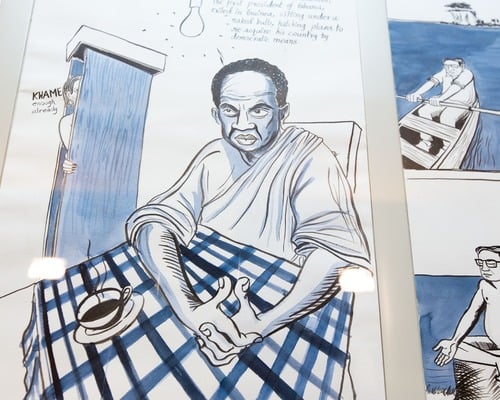
The Abraaj Group Art Prize exhibition.
Photo: The Studio, Dubai.
Strong Sales in the Contemporary Section
Among the newcomers, Honor Fraser certainly didn’t regret the long trip from Los Angeles. Her solo presentation of Kaws’s Charles Shultz-inspired works ($140,000-220,000) was a hit with collectors, known and new. Only hours in the preview, she reported “quite a few handshakes.”
“Everything here is either sold or reserved, all to local collectors,” said Victoria Miro’s Glenn Scott-Wright. In Art Dubai for the third time, the London powerhouse, which reported slower business in the two previous years, won collectors’ heart with an Idris Khan solo presentation, including a series of cubes directly echoing Mecca’s Ka’aba. Prices ranged from £10,000 ($14,758) for the smaller works to £500,000 ($737,903) for the monumental piece.
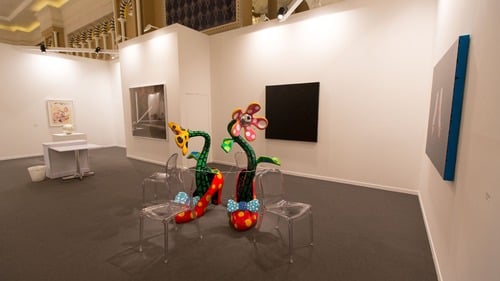
Art Dubai Contemporary 2015.
Photo: The Studio, Dubai.
Over seventy-eight museum groups are expected this year, and some of the fair’s most ambitious presentations are clearly geared towards institutions—or the top of the collecting crop. Among them are Rafael Lozano-Hemmer’s interactive pieces at London’s Carroll/Fletcher (price tag: $140,000-250,000). Pulse Index drew the preview crowds, eager to contribute to this immersive and ever-evolving fingerprint archive. Over at In Situ/Fabienne Leclerc, Joana Hadjithomas and Khalil Joreige’s series of sculptural works inspired by internet scams was a tantalizing teaser of their upcoming exhibition at Manchester’s HOME next September.
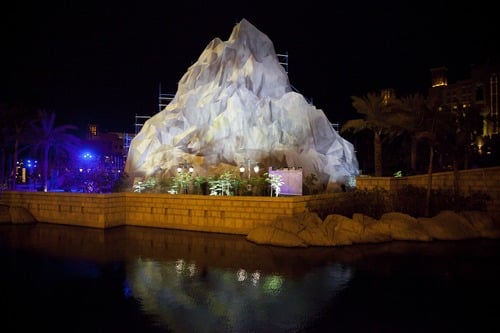
Yazan Khalili’s installation, ‘The Island’ for The Art Bar by Absolut.
Photo: The Studio, Dubai.
Aladdin City
While most fairs pride themselves on their non-profit program, Art Dubai has taken things to a whole new level, no doubt inspired—at least at the beginning—by the need to create the necessary community for it to flourish: The art school Campus Art Dubai runs throughout the year; the Global Art Forum provides a highly-praised academic counterpoint to the fair itself; and the projects astutely combine local and foreign artists in a strong program that doesn’t feel—as it so often does elsewhere—like an afterthought (see Art Dubai Announces 2015 Projects Program).
Among those, Hind Mezaina’s video installation It may have been where the tales of Sinbad and Aladdin came from (2015) reflects on Dubai’s ever-changing cityscape, and the self-orientalizing PR language that often comes with it. Taking as the starting point the historical Dubai Creek soon to be redeveloped as “Aladdin City,” the piece revisits the emirate’s shifting self-representation—from the exotic old port to the high rises—and its incessant race forward. “Every projects tries to outdo the next. When does that stop?,” she asks.

Art Dubai 2015
Photo: Coline Milliard
Although Mezaina deplores the fact that changes are mainly geared towards attracting foreigners, Dubai’s vibrant landscape has proved a hospitable terrain for an art market always hungry for fresh capital—and talent. The Dubai gallery scene has just got a big boost with the announcement that the Alserkal Avenue art hub—which hosts the likes of Lawrie Shabibi, Green Art Gallery, and Gallery Isabelle van den Eynde—is adding 15 new galleries, including Heller’s (mentioned above), Stéphane Custot Gallery, and a new home for Dubai’s Third Line.
“Only ten years ago, the idea of Dubai being a cultural center would have been unthinkable,” director Carver told artnet News. “Dubai has now really emerged as an art market center but also as place for artists. It’s a really good ecology: with a biennial in Sharjah, a museum that is coming up. It’s a mature and working environment.”